Submitted:
31 October 2023
Posted:
31 October 2023
You are already at the latest version
Abstract
Keywords:
1. Introduction
2. Materials and Methods
2.1. Study area
2.2. LAI data
2.3. Analysis of LAI dynamics
2.4. Software
3. Results
3.1. Area classification in Candaba
3.2. Annual LAI dynamics for each region
3.2.1. Area 1 (Southern area)
3.2.2. Area 2 (Northern area)
3.2.3. Area 3 (Lower terrain area)
3.2.4. Area 4 (Eastern and western area)
4. Discussion
Author Contributions
Funding
Data Availability Statement
Acknowledgments
Conflicts of Interest
References
- The impact of disasters and crises on agriculture and food security: 2021. (2021). In The impact of disasters and crises on agriculture and food security: 2021. FAO. [CrossRef]
- Marcaida, M., Farhat, Y., Muth, E. N., Cheythyrith, C., Hok, L., Holtgrieve, G., Hossain, F., Neumann, R., & Kim, S. H. (2021). A spatio-temporal analysis of rice production in Tonle Sap floodplains in response to changing hydrology and climate. Agricultural Water Management, 258. [CrossRef]
- Molle, F., Chompadist, C., & Bremard, T. (2021). Intensification of rice cultivation in the floodplain of the Chao Phraya delta. Southeast Asian Studies, 10(1), 141–168. [CrossRef]
- Win, S., Zin, W. W., Kawasaki, A., & San, Z. M. L. T. (2018). Establishment of flood damage function models: A case study in the Bago River Basin, Myanmar. International Journal of Disaster Risk Reduction, 28, 688–700. [CrossRef]
- National Disaster Risk Reduction and Management Center. (2020). Sitrep No. 28 re Preparedness Measures and Effects for Typhoon “ULYSSES” (I.N. VAMCO).
- Juarez-Lucas, A. M., Kibler, K. M., Ohara, M., & Sayama, T. (2016). Benefits of flood-prone land use and the role of coping capacity, Candaba floodplains, Philippines. Natural Hazards, 84(3), 2243–2264. [CrossRef]
- Karthikeyan, L., Chawla, I., & Mishra, A. K. (2020). A review of remote sensing applications in agriculture for food security: Crop growth and yield, irrigation, and crop losses. Journal of Hydrology, 586. [CrossRef]
- Kasampalis, D. A., Alexandridis, T. K., Deva, C., Challinor, A., Moshou, D., & Zalidis, G. (2018). Contribution of remote sensing on crop models: A review. In Journal of Imaging (Vol. 4, Issue 4). MDPI. [CrossRef]
- Araya, S., Ostendorf, B., Lyle, G., & Lewis, M. (2018). CropPhenology: An R package for extracting crop phenology from time series remotely sensed vegetation index imagery. Ecological Informatics, 46, 45–56. [CrossRef]
- Hassan, D. F., Abdalkadhum, A. J., Mohammed, R. J., & Shaban, A. (2022). Integration Remote Sensing and Meteorological Data to Monitoring Plant Phenology and Estimation Crop Coefficient and Evapotranspiration. Journal of Ecological Engineering, 23(4), 325–335. [CrossRef]
- Bascietto, M., Santangelo, E., & Beni, C. (2021). Spatial variations of vegetation index from remote sensing linked to soil colloidal status. Land, 10(1), 1–15. [CrossRef]
- Ozdogan, M., Yang, Y., Allez, G., & Cervantes, C. (2010). Remote sensing of irrigated agriculture: Opportunities and challenges. In Remote Sensing (Vol. 2, Issue 9, pp. 2274–2304). [CrossRef]
- Iwahashi, Y., Ye, R., Kobayashi, S., Yagura, K., Hor, S., Soben, K., & Homma, K. (2021). Quantification of changes in rice production for 2003–2019 with modis lai data in pursat province, cambodia. Remote Sensing, 13(10). [CrossRef]
- Zhao, Y., Wang, X., Guo, Y., Hou, X., & Dong, L. (2022). Winter Wheat Phenology Variation and Its Response to Climate Change in Shandong Province, China. Remote Sensing, 14(18). [CrossRef]
- Department of Environment and Natural Resources, Q. C. (2013). Protected Areas and Wildlife Bureau (2013) The National Wetlands Action Plan for the Philippines 2011–2016.
- Mamiit, R. J., Yanagida, J., & Miura, T. (2021). Productivity Hot Spots and Cold Spots: Setting Geographic Priorities for Achieving Food Production Targets. Frontiers in Sustainable Food Systems, 5. [CrossRef]
- Kobayashi, T., Tateishi, R., Alsaaideh, B., Sharma, R. C., Wakaizumi, T., Miyamoto, D., Bai, X., Long, B. D., Gegentana, G., Maitiniyazi, A., Cahyana, D., Haireti, A., Morifuji, Y., Abake, G., Pratama, R., Zhang, N., Alifu, Z., Shirahata, T., Mi, L., … Phong, D. X. (2017). Production of Global Land Cover Data – GLCNMO2013. Journal of Geography and Geology, 9(3), 1. [CrossRef]
- Gorelick, N., Hancher, M., Dixon, M., Ilyushchenko, S., Thau, D., & Moore, R. (2017). Google Earth Engine: Planetary-scale geospatial analysis for everyone. Remote Sensing of Environment, 202, 18–27. [CrossRef]
- National Disaster Risk Reduction and Management Center. (2015). Sitrep No. 19 re Preparedness Measures and Effects for Typhoon “NONA” (I.N. MELOR).
- Kim, S.-H., Park, J.-H., Woo, C.-S., & Lee, K.-S. (2005). Analysis of Temporal Variability of MODIS Leaf Area Index (LAI) Product over Temperate Forest in Korea.
- de Grandpré, A., Kinnard, C., & Bertolo, A. (2022). Open-Source Analysis of Submerged Aquatic Vegetation Cover in Complex Waters Using High-Resolution Satellite Remote Sensing: An Adaptable Framework. Remote Sensing, 14(2). [CrossRef]
- Melendres, R. G. (2014). The Utilization of Candaba Swamp from Prehistoric to Present Time: Evidences from Archaeology, History and Ethnography.
- Kotera, A., Nagano, T., Hanittinan, P., & Koontanakulvong, S. (2016). Assessing the degree of flood damage to rice crops in the Chao Phraya delta, Thailand, using MODIS satellite imaging. Paddy and Water Environment, 14(1), 271–280. [CrossRef]
- Ding, X. W., & Li, X. F. (2011). Monitoring of the water-area variations of Lake Dongting in China with ENVISAT ASAR images. International Journal of Applied Earth Observation and Geoinformation, 13(6), 894–901. [CrossRef]
- Mendes, F. de S., Baron, D., Gerold, G., Liesenberg, V., & Erasmi, S. (2019). Optical and SAR remote sensing synergism for mapping vegetation types in the endangered Cerrado/Amazon ecotone of Nova Mutum-Mato Grosso. Remote Sensing, 11(10). [CrossRef]
- Orynbaikyzy, A., Gessner, U., & Conrad, C. (2019). Crop type classification using a combination of optical and radar remote sensing data: a review. In International Journal of Remote Sensing (Vol. 40, Issue 17, pp. 6553–6595). Taylor and Francis Ltd. [CrossRef]
- Hirooka, Y., Homma, K., Maki, M., & Sekiguchi, K. (2015). Applicability of synthetic aperture radar (SAR) to evaluate leaf area index (LAI) and its growth rate of rice in farmers’ fields in Lao PDR. Field Crops Research, 176, 119–122. [CrossRef]
- Grimaldi, S., Xu, J., Li, Y., Pauwels, V. R. N., & Walker, J. P. (2020). Flood mapping under vegetation using single SAR acquisitions. Remote Sensing of Environment, 237. [CrossRef]
- Jeong, S., Kang, S., Jang, K., Lee, H., Hong, S., & Ko, D. (2012). Development of Variable Threshold Models for detection of irrigated paddy rice fields and irrigation timing in heterogeneous land cover. Agricultural Water Management, 115, 83–91. [CrossRef]
- Supriatna, Rokhmatuloh, Wibowo, A., Shidiq, I. P. A., Pratama, G. P., & Gandharum, L. (2019). Spatio-temporal analysis of rice field phenology using Sentinel-1 image in Karawang Regency West Java, Indonesia. International Journal of GEOMATE, 17(62), 101–106. [CrossRef]

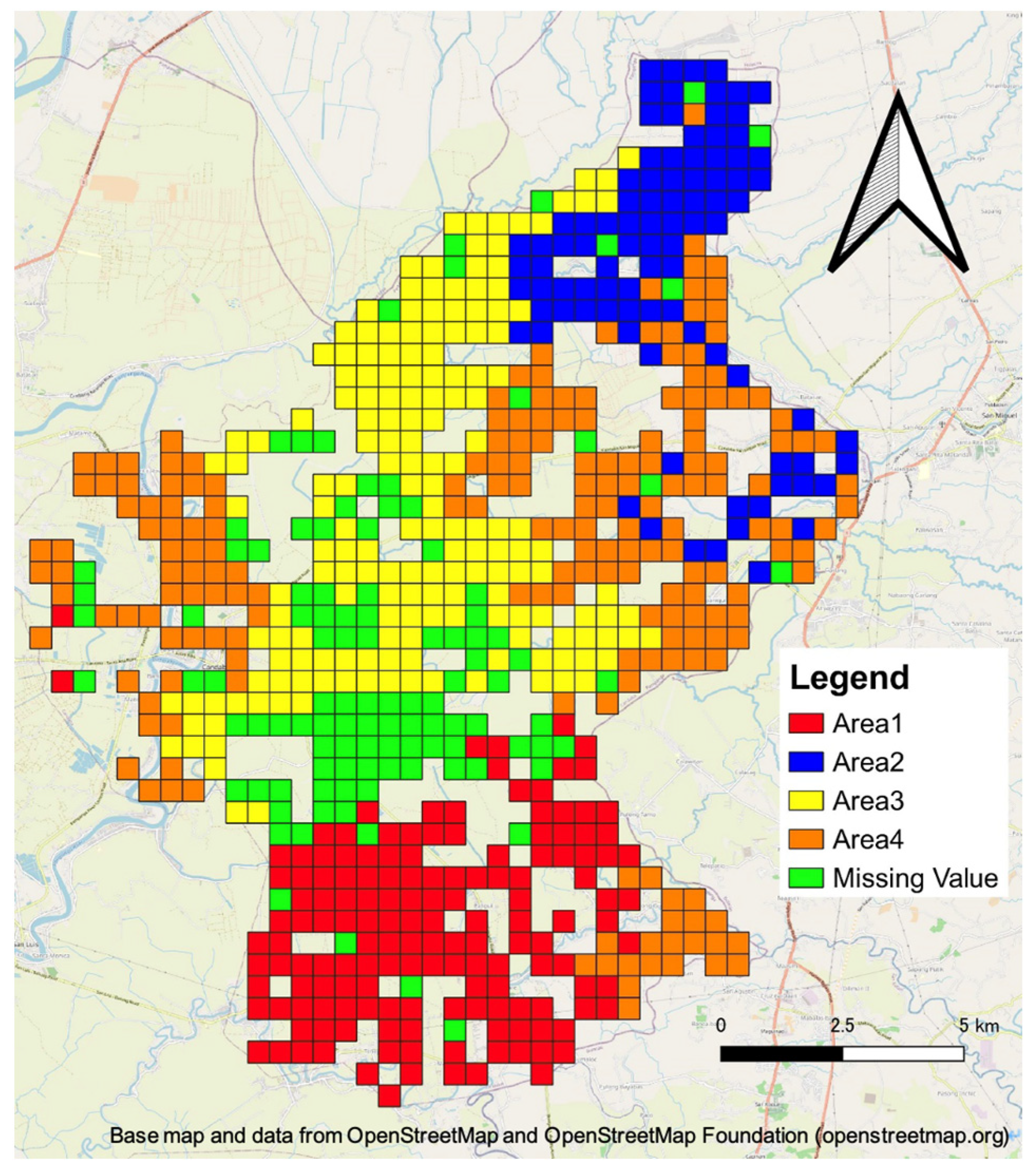
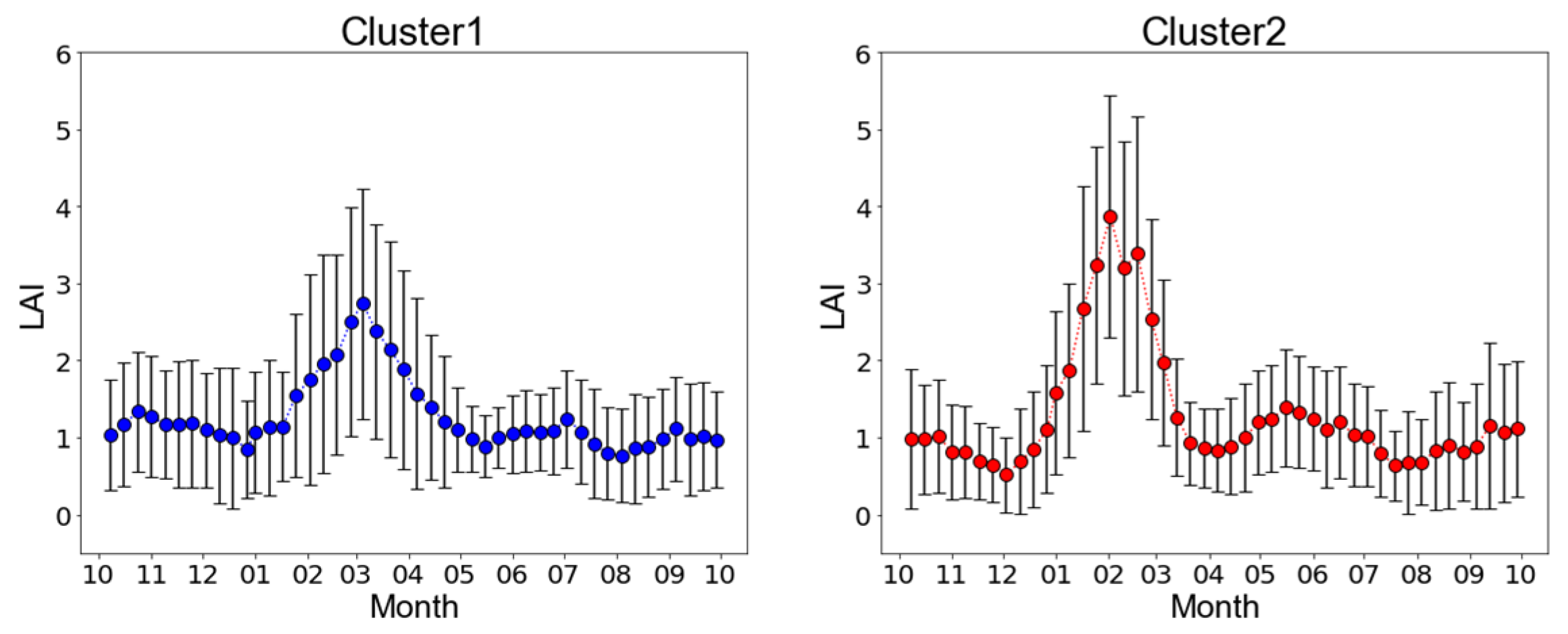
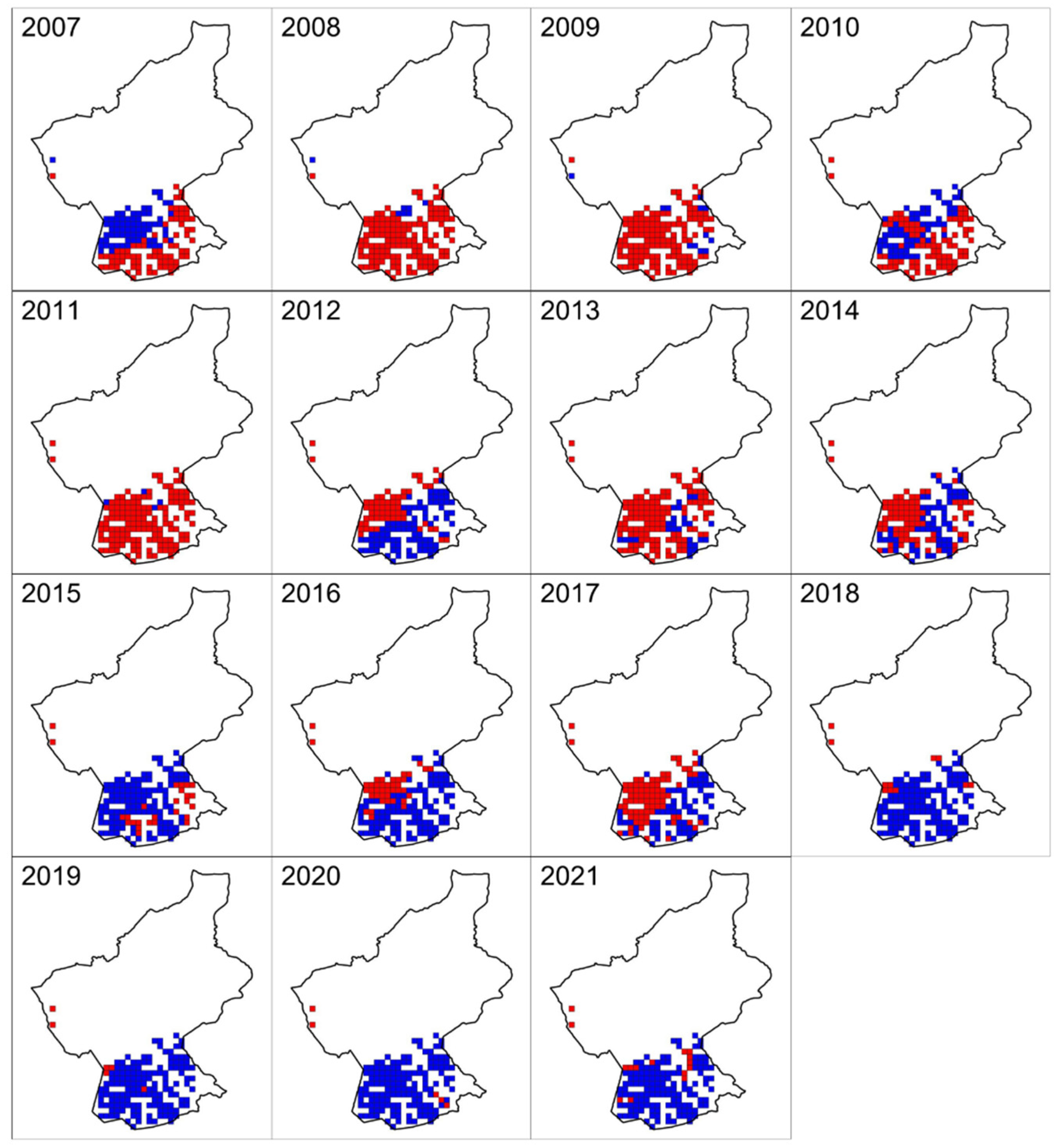

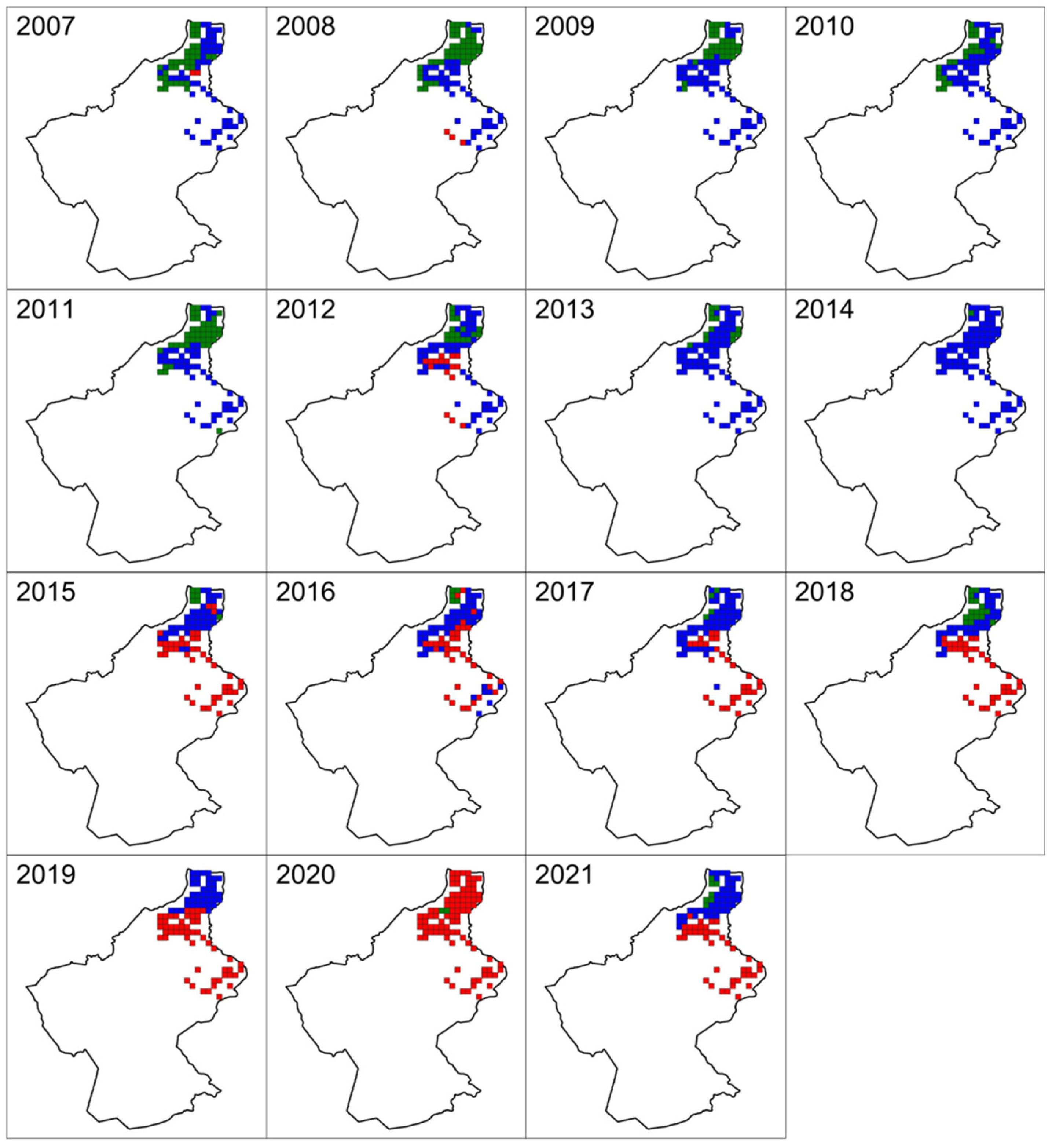

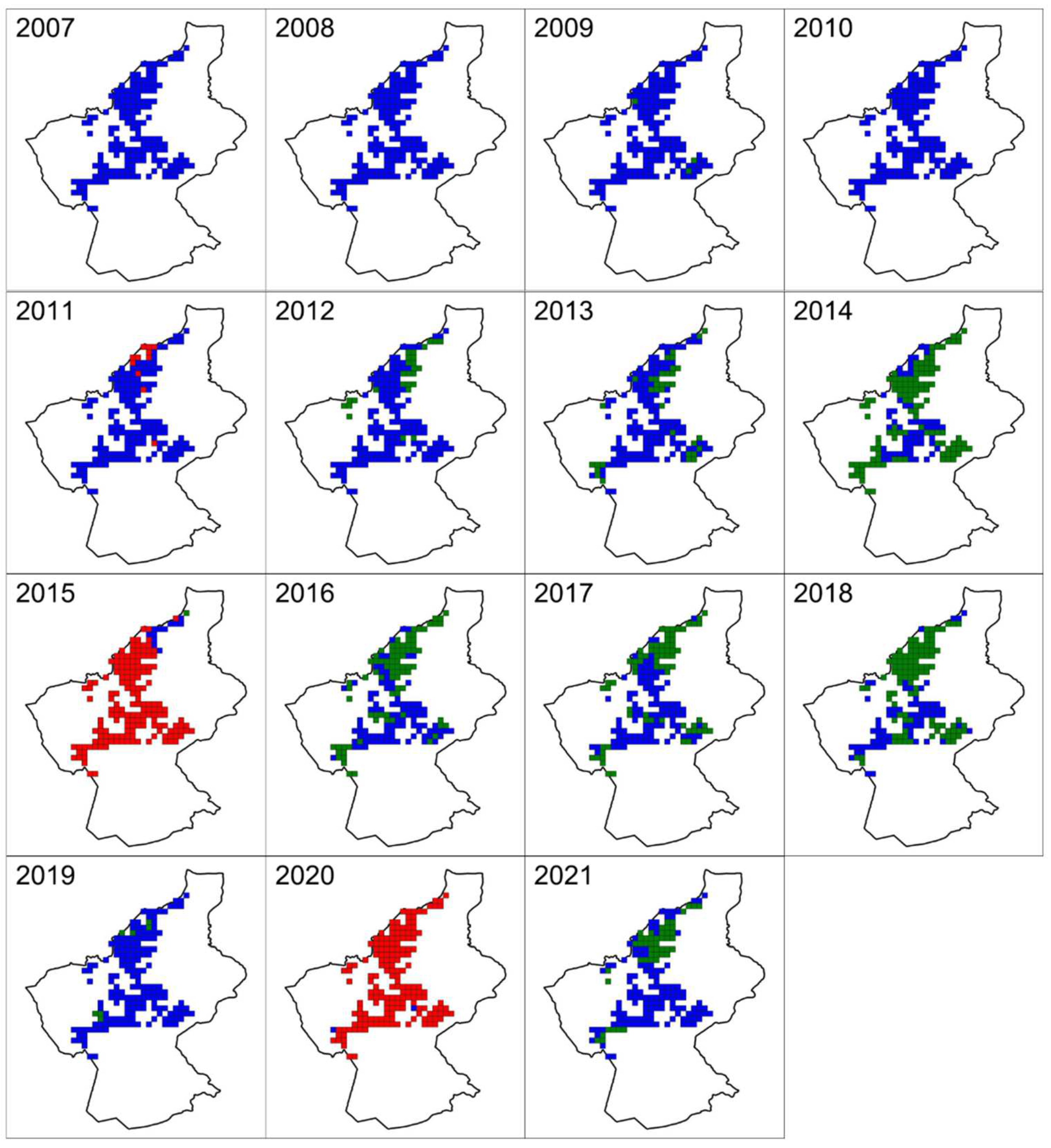

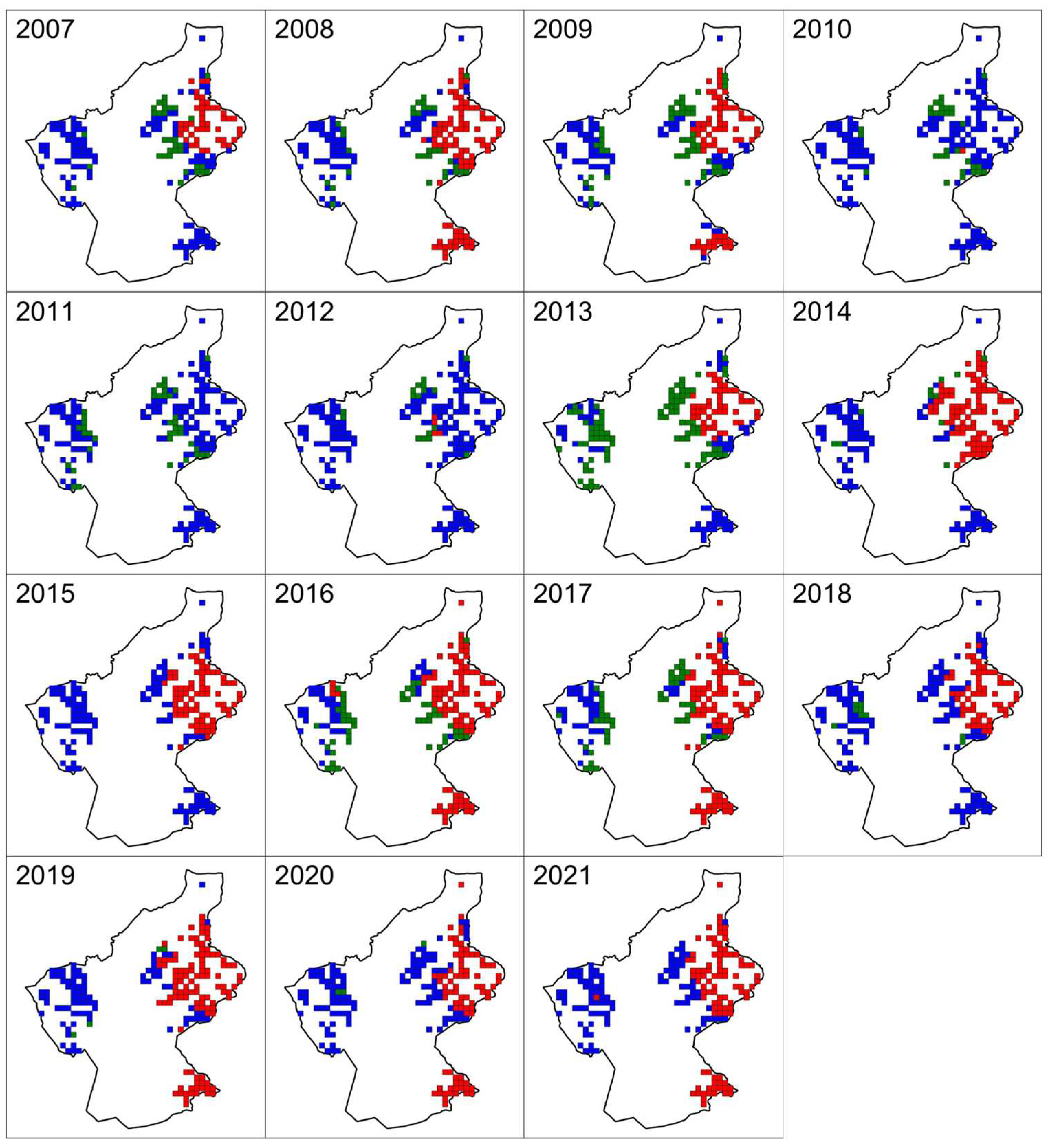
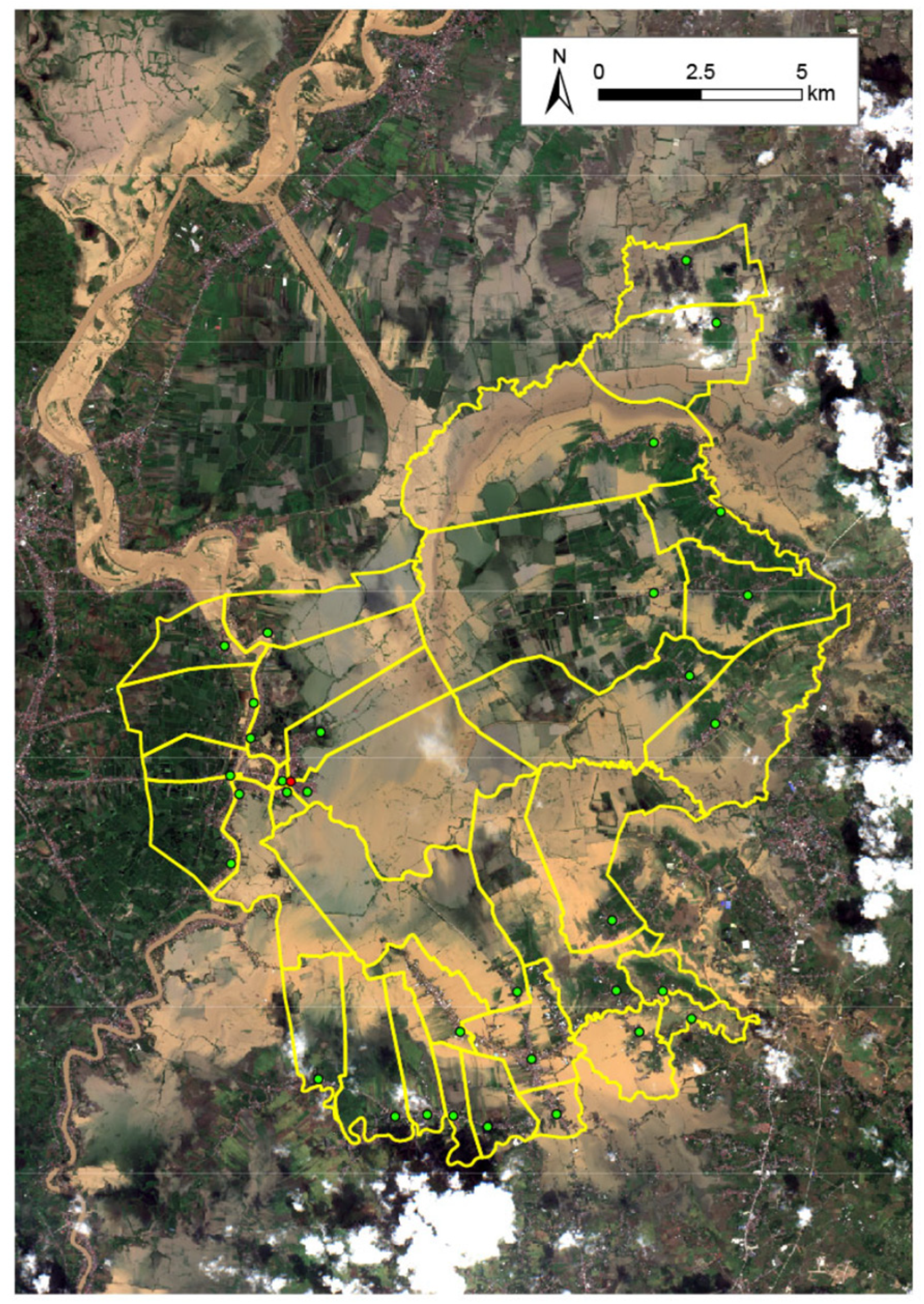
Disclaimer/Publisher’s Note: The statements, opinions and data contained in all publications are solely those of the individual author(s) and contributor(s) and not of MDPI and/or the editor(s). MDPI and/or the editor(s) disclaim responsibility for any injury to people or property resulting from any ideas, methods, instructions or products referred to in the content. |
© 2023 by the authors. Licensee MDPI, Basel, Switzerland. This article is an open access article distributed under the terms and conditions of the Creative Commons Attribution (CC BY) license (http://creativecommons.org/licenses/by/4.0/).




